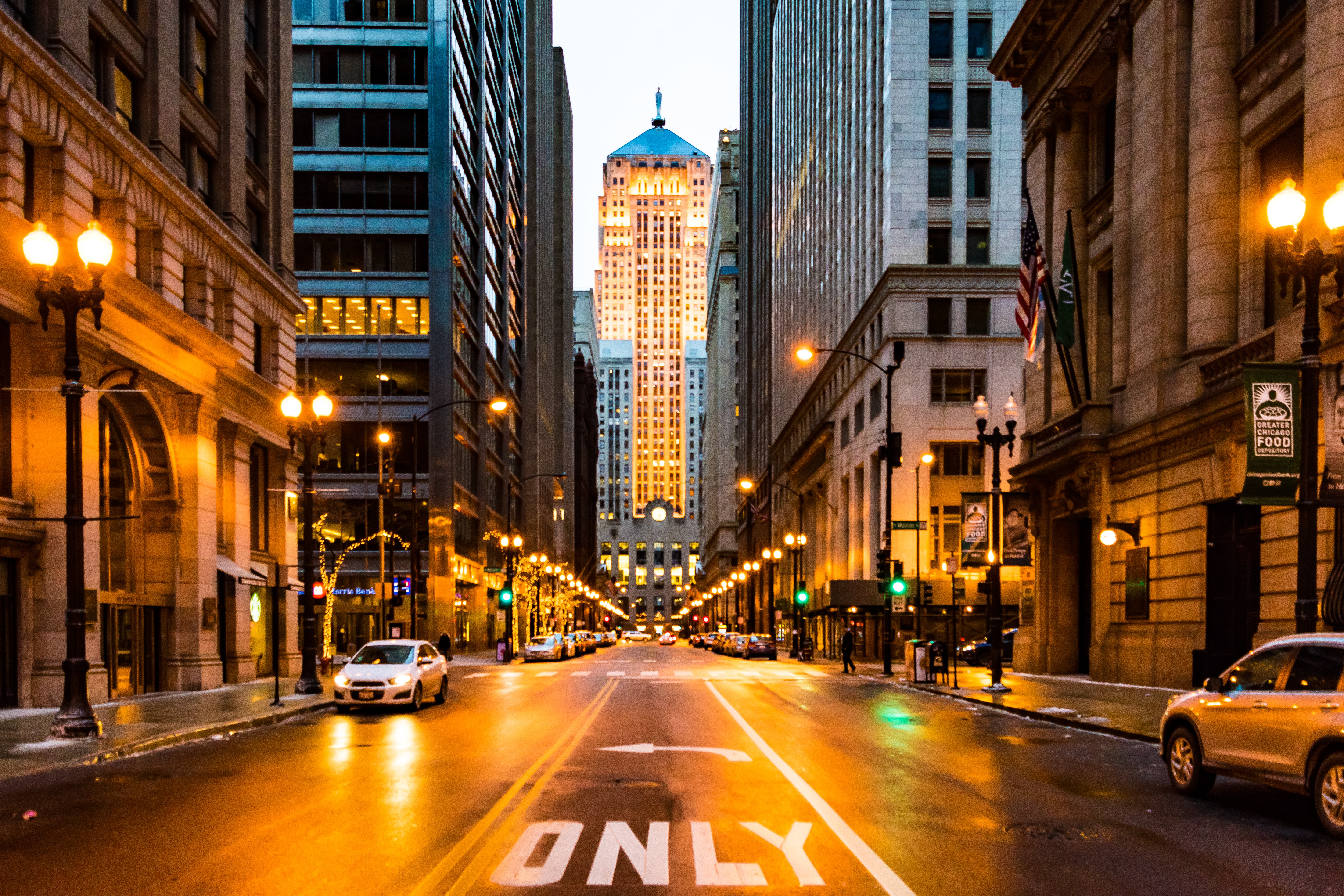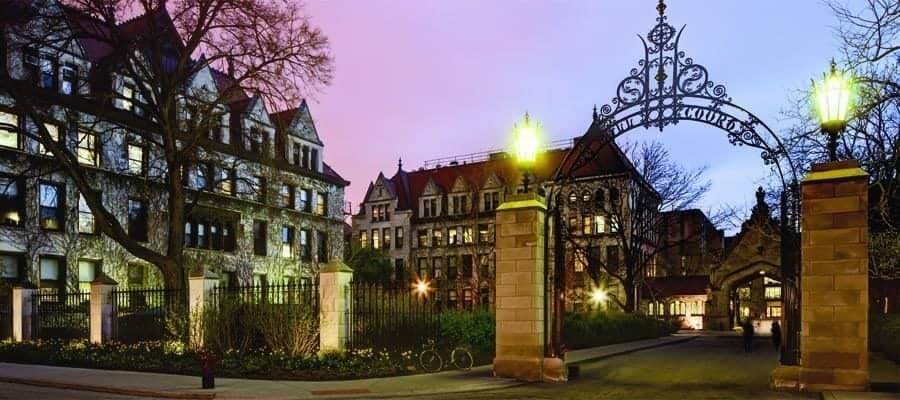Looking at Vacant Lots in Chicago
Along with my classmates, Kashif Ahmed and Jason Winick, we conducted an analysis of vacant lots in Chicago to identify candidates for green space conversion. Vacant lots are a persistent problem in the city of Chicago. The City holds thousands of pieces of property throughout its jurisdiction, many the result of foreclosures and systemic disinvestment. This represents a huge burden to the city in maintaining these lots and attempting to transfer them to new owners. However, current management and disposition of vacant lots is hindered by information problems, including:
- Lack of transparency for residents regarding decision-making process
- Relevant information about the lots is spread through multiple data sources that do not cross-populate
- Lack of clear standards for lots to meet before transfer to private ownership
View a Code Sample
import pandas as pd
from shapely.geometry import Point, MultiPolygon
from shapely.ops import transform
import geopandas as gpd
import matplotlib.pyplot as plt
from pygeoif import geometry
import os
from shapely.geometry.multipoint import MultiPointAdapter
from shapely.geometry.multipolygon import MultiPolygon
from sodapy import Socrata
from shapely.geometry import shape
import pyproj
PATH = os.path.abspath(os.getcwd())
def api_get(fname):
client = Socrata("data.cityofchicago.org", None)
results = client.get(fname, limit = 20005)
df = pd.DataFrame.from_records(results)
return df
def read_lots(api_key="aksk-kvfp"):
df = api_get(api_key)
gdf = gpd.GeoDataFrame(df, geometry=gpd.points_from_xy(df["x_coordinate"], df["y_coordinate"]))
gdf = gdf.dropna(subset=["address", "location", ":@computed_region_rpca_8um6", "latitude", "longitude"])
gdf = gdf.set_crs("ESRI: 102671")
return gdf
def fix_geom(df, geom='the_geom'):
df['geometry'] = df[str(geom)].apply(lambda row:geometry.as_shape(row))
return df
def re_proj(row):
proj = pyproj.Proj('+proj=tmerc +lat_0=36.66666666666666 +lon_0=-88.33333333333333 +k=0.9999749999999999 +x_0=300000 +y_0=0 +ellps=GRS80 +datum=NAD83 +to_meter=0.3048006096012192 +no_defs')
x, y = proj(row["longitude"], row["latitude"])
return x, y
def gdf_proj(df):
df["projected_coord"] = df.apply(re_proj, axis=1)
x = []
y = []
for tuple in df["projected_coord"]:
a, b = tuple
x.append(a)
y.append(b)
df["x"] = x
df["y"] = y
gdf = gpd.GeoDataFrame(df, geometry=gpd.points_from_xy(df["x"], df["y"]))
return gdf
def csv_to_gdf(csv_name):
df = pd.read_csv(os.path.join(PATH,csv_name))
df['Coordinates'] = df['Map Site CSV'].str.split('GEOSEARCH:').str[1]
df[['latitude', 'longitude']] = df.pop('Coordinates').str.split(' ', 1, expand=True)
df = df[df.longitude != ""]
df = df[df.latitude != ""]
gdf = gdf_proj(df)
return gdf
def read_bf(csv=r"CIMC Basic Search Result.csv"):
gdf = csv_to_gdf(csv)
gdf = gdf.set_crs("ESRI: 102671")
return gdf
def check_tuple(gdf):
#col_list = []
for col in gdf.columns:
print(col, 'is a tuple : ', all(isinstance(x,tuple) for x in gdf[col]))
def find_centroid(df):
centroids = []
for multipolygon in df["geometry"]:
center = multipolygon.centroid
centroids.append(center)
df["centroid"] = centroids
return df
def proj_transform(df, to_wgs=True, geom_col="geometry", epsg="EPSG: 4326"):
reprojections = []
if to_wgs == True:
for point in df[geom_col]:
inproj = pyproj.CRS('+proj=tmerc +lat_0=36.66666666666666 +lon_0=-88.33333333333333 +k=0.9999749999999999 +x_0=300000 +y_0=0 +ellps=GRS80 +datum=NAD83 +to_meter=0.3048006096012192 +no_defs')
project = pyproj.Transformer.from_crs(inproj, epsg, always_xy=True).transform
new_point = transform(project, point)
reprojections.append(new_point)
else:
for point in df[geom_col]:
outproj = pyproj.CRS('+proj=tmerc +lat_0=36.66666666666666 +lon_0=-88.33333333333333 +k=0.9999749999999999 +x_0=300000 +y_0=0 +ellps=GRS80 +datum=NAD83 +to_meter=0.3048006096012192 +no_defs')
project = pyproj.Transformer.from_crs(epsg, outproj, always_xy=True).transform
new_point = transform(project, point)
reprojections.append(new_point)
df["geometry_reproj"] = reprojections
return df
def read_park_nbh(api_key, park=False):
df = api_get(api_key)
df = fix_geom(df)
gdf = gpd.GeoDataFrame(df, geometry=df["geometry"])
gdf = gdf.set_crs("EPSG:4326")
if park == True:
gdf = find_centroid(gdf)
gdf = proj_transform(gdf, to_wgs=False, geom_col="centroid")
return gdf
def read_bus(api_key="qs84-j7wh"):
df = api_get(api_key)
df = df.rename(columns={"point_x":"longitude", "point_y":"latitude"})
gdf = gdf_proj(df)
streets = "55th|Garfield|63rd|79th|Ashland|Chicago|Lake Shore|Western"
gdf = gdf[gdf["street"].str.contains(streets,case=False)]
return gdf
def read_el(api_key="8pix-ypme"):
df = api_get(api_key)
for idx, row in df.iterrows():
df.loc[idx, 'latitude'] = df['location'][idx]['latitude']
df.loc[idx, 'longitude'] = df['location'][idx]['longitude']
gdf = gdf_proj(df)
return gdf
def is_near(coordinate, df, distance, geom_column="geometry"):
counter = 0
circle_buffer = coordinate.buffer(distance)
for station in df[str(geom_column)]:
if station.within(circle_buffer):
counter += 1
return counter
def near_counter(gdf, comp_gdf, near_col, distance=2500, geom_column="geometry"):
near = []
for point in gdf["geometry"]:
counter = is_near(point, comp_gdf, distance, geom_column)
near.append(counter)
gdf[near_col] = near
return gdf
def find_eligibility(df, elig_col, elig_list, new_col_name):
eligible = []
for lot in df[elig_col]:
if lot in elig_list:
eligible.append(1)
else:
eligible.append(0)
df[new_col_name] = eligible
return df
def find_candidates(row):
if row["ANLAP Eligible"] + row["Large Lots Eligible"] >= 1:
score = row["Near El"] + (row["Near Bus"]/10) + row["Invest SW Eligible"] - row['Near Park'] - row['Near Brownfield']
else:
score = 0
return score
gdf = read_lots()
gdf_park = read_park_nbh("ejsh-fztr", park=True)
gdf_nbh = read_park_nbh("y6yq-dbs2")
gdf_bus = read_bus()
gdf_el = read_el()
gdf_bf = read_bf()
gdf = near_counter(gdf, gdf_park, "Near Park", geom_column="geometry_reproj")
gdf = near_counter(gdf, gdf_bus, "Near Bus")
gdf = near_counter(gdf, gdf_el, "Near El")
gdf = near_counter(gdf, gdf_bf, "Near Brownfield")
invest_sw = ["AUBURN GRESHAM", "AUSTIN", "BRONZEVILLE", "ENGLEWOOD", "NEW CITY", "NORTH LAWNDALE", "GREATER ROSELAND", "SOUTH CHICAGO"]
anlap = ["RM-5", "RT-4", "RS-1", "RS-2", "RS-3"]
large_lots = ['RS-2', 'RS-3', 'RT-4', 'RM-5', 'RT-4A', 'RM-4.5', 'RM-6', 'RS-1','RM-5.5', 'RT-3.5', 'RM-6.5']
gdf = find_eligibility(gdf, "community_area_name", invest_sw, "Invest SW Eligible")
gdf = find_eligibility(gdf, "zoning_classification", anlap, "ANLAP Eligible")
gdf = find_eligibility(gdf, "zoning_classification", large_lots, "Large Lots Eligible")
gdf["score"] = gdf.apply(find_candidates, axis=1)

Visualizing Local Violence Prevention and Response Budgets
I wrote a script in R to create a series of graphs for city government budgets to compare allocations for violence prevention and response. Theses graphs were used in presentations internally to help staff prepare budget proposals.

Mayoral Fellowship New Ideas Website
The Mayor’s Office Fellowship Program is the premier opportunity for bright, motivated, and civic-minded graduate students from all disciplines to apply their coursework to the greatest municipal laboratory in the world: the City of Chicago. As a Fellow, I was invited to present proposals for new City programs. The New Ideas Presentation is the culmination of this Fellowship, now in digital form.
Let's Connect!
I consider myself a decoder; nothing excites me more than solving problems! Right now, I’m focusing on improving information coordination for city services in Chicago and experimenting with better tech products for residents.
